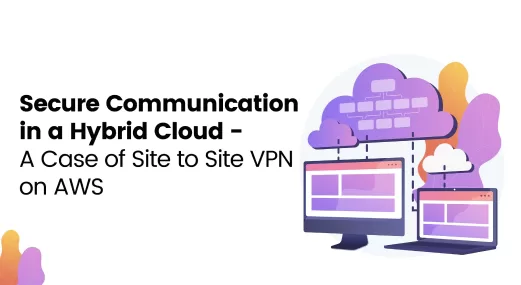Native or Cross-Platform Application Development: That Is the Question
“90% of Time on Mobile is spent in Apps”
Source:Agilie
Developing an app is not a walk in the park which is why it requires a robust course of action and copious problem-solving. If you’re a first-time developer about to delve into mobile app development, the first and foremost decision to make is to choose the right platform for your app. This has long-term implications in terms of feasibility, functionality, performance and scalability.
There are two primary approaches for any mobile application: native, and cross-platform. Native app development refers to building a mobile app exclusively for a single platform in a compatible language. For example, a native Android app would require developing with Java and/ or Kotlin. A few app examples for native Android app development include Slack, Lyft, and Evernote developed in Kotlin. For an iOS app, however, you would use Swift and/ or Objective-C. A few app examples for native iOS app development include LinkedIn, WordPress, and Firefox developed in Swift.
Cross-platform app development intimates the process of creating an app that works on several platforms simultaneously. This is achieved via frameworks like React Native, Xamarin, and Flutter, where the product is deployed on Android, iOS and Windows. A few app examples for Cross-Platform app development include Artsy, Bitesnap, Bunch in React Native; Storyo, Insightly, Skulls of the shotgun in Xamarin; and Google Ads, Xianyu by Alibaba and Hamilton in the Flutter framework.

In 1995, Sun Microsystems created a slogan “Write once, run anywhere” (WORA), or sometimes “Write once, run everywhere” (WORE), to illustrate cross-platform benefits of Java language. True story!
Each approach comes with its own baggage of boon and bane.
So how do you take your pick? Dictated herein are the crucial elements to help you choose one over the other:
Downloads
Article (PDF-276 KB)MOST POPULAR INSIGHTS
- Optimizing Container Image Pull Efficiency: A Technical Deep Dive
- Streamline Your Application Delivery with AWS AppStream 2.0: An Introduction
- Secure Communication in a Hybrid Cloud – A Case of Site-to-Site VPN on AWS
- Understanding, Communicating and Making Informed Decisions with Data Visualization
- Cross-Account, Cross-Region Backups in AWS
What to Consider When Choosing an Approach to Build Your Mobile App
- Application Complexity and Platform DependenceIf you are developing a complex application that requires access to low-level APIs like Bluetooth, you’ll want to go with native approach because it guarantees (theoretically) zero limitations on said platform. This is because it is easier for a native application to interact with a specific OS and the device’s hardware. Therefore, getting access to all the services of the device is quite convenient.However, if it is an application that does not require access to complex OS-specific features, then cross-platform development is a good choice considering the features of the chosen framework do not pose restrictions.
Noteworthy: Facebook and Google have launched powerful cross-platform app development frameworks namely, React Native and Flutter respectively, thereby drastically bridging the gap between native and cross-platform applications, making the latter approach a better fit for a much larger scope of applications.
- Development and Support FeasibilityThe time it takes for you to make an application is significant, especially when you’re on a tight schedule. It’s essential to decide the best framework to utilize when time is of the essence. If you have a short deadline for a relatively plain app, consider cross-platform development. As mentioned earlier, you do not need to work on two separate versions for the application. Instead, a single cycle of development is needed for an app to be released for Android and iOS. On the contrary, native app development will take twice as much time thereby lagging behind in schedule.Companies often require a Minimum Viable Product (MVP) for their B2B or B2C apps in the nick of time. Xgrid has worked with such clients and delivered profound applications in a very short time span.Choosing an approach depends vastly on your budget as well. Complex native applications cost more to develop and maintain compared to their cross-platform counterparts. If you have a limited budget to work with, cross-platform development is an ideal choice. You’ll save around 30%-40% since only a single codebase will be created for an app that works on both Android and iOS.
- Performance and UI/UXApplication Performance is crucial to the success of any application. A decisive factor in good performance of an app is its speed. Native applications offer high speed and better performance, however in some cases the cross-platform approach allows for significant reduction in development cost and time without deterioration in user experience
“Statistical research shows that an average user won’t wait more than 3 seconds for an app to load.”
Source: LitsLink
Nevertheless, if your product mandates outstanding user experience, performance and feature-richness, go for native development. Xgrid has developed an enterprise-level native iPad application, currently deployed in a production environment, engaging around 700 users. The app has a variety of features such as task management and logging, clock ins/outs, daily site reports, and employees’ certification etc. The app is designed to work in both online and offline modes.
For some audiences, user-friendliness is directly correlated with a complementing app and device interface. Here at Xgrid, our developers find the optimal solution to this problem:
- Native Approach: The developers coordinate their actions such that the interfaces of iOS and Android app versions are as identical to the underlying platform as possible.
- Cross-Platform Approach: The developers make sure all application elements are recognizable and the product interface itself is intuitive and user-friendly.
- Audience ReachCross-platform and hybrid applications allow you to reach a wider audience than native programs since they’re targeted at several platforms at once and you’ll be able to establish contact simultaneously with iOS and Android users. As a result, you get a chance to increase your user base in the shortest possible time. This, in no way, implies that native applications do not offer reach on multiple platforms at all. They do, but they take a bit longer to reach the audience on both platforms because their Android and iOS versions are deployed in different timelines.
When to Choose Native App Development
To summarize, pick native development if:
- You want to take full advantage of the mobile phone’s hardware, resources, and services
- App responsiveness is uncompromisable for you
- You want an app that can be easily updated and enhanced with new features in the future (in one platform)
- Cloud native applications are superior in terms of security, scalability and stability.
When to Choose Cross-Platform App Development
Opt for cross-platform app development if:
- You want to maximize your reach to the target audience concurrently in multiple platforms
- Your application requires an extensive use of third party plugins or integration options
- You want to test an app blueprint in the market or promote it in a short period of time
That’s a lot of big words, we know. If you are still unsure about the best approach for your application, we can assist you in reaching a decision by taking you forward step-by-step. We realize that each application is unique in nature and needs a special approach. Therefore, we facilitate our customers by modeling a feasibility report taking into account all the features of a particular project, and give advice and consultancy based on these premises, all-the-while keeping in view our client’s budget, time and need for reach. We are a team of highly qualified application developers in both iOS and Android platforms who will analyze your case and recommend what is best to choose: iOS and/or Android native development or cross-platform approach.
Want to get in touch? Drop us an email at sales@xgrid.co

Established in 2012, Xgrid has a history of delivering a wide range of intelligent and secure cloud infrastructure, user interface and user experience solutions. Our strength lies in our team and its ability to deliver end-to-end solutions using cutting edge technologies.
OFFICE ADDRESS
US Address:
Plug and Play Tech Center, 440 N Wolfe Rd, Sunnyvale, CA 94085
Pakistan Address:
Xgrid Solutions (Private) Limited, Bldg 96, GCC-11, Civic Center, Gulberg Greens, Islamabad
Xgrid Solutions (Pvt) Ltd, Daftarkhwan (One), Building #254/1, Sector G, Phase 5, DHA, Lahore





